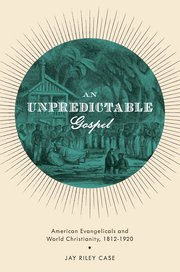
What Case argues is that most analyses of the Christian missionary encounter have failed to take into consideration the role of indigenous Christian leaders in the missionary response. Case believes standard histories have often misread the power dynamics of the missionary encounter. In the words of reviewer Douglas Tzan (Boston University School of Theology) in the Evangelical Studies Bulletin (Summer 2013/Issue 84), “Indigenous leaders played critical roles in the emergence of new forms of world Christianity, and the most successful missionaries worked from ‘positions of weakness’ (page 8 in Case).” Indigenous peoples critically adopted and adapted various resources introduced to them by American missionaries and in the process they pushed the missionaries to change as well.
Case’s key concept is a distinction he makes between “formalist” and antiformalist” evangelicals. These terms describe two ways that evangelicals understood their role within society and culture. On the formalist side both conversion of the individual and a “godly social order” were sought. These missionaries tried to create reform social movements and more permanent institutions. There general assumption was quite often that Western civilization was superior. Often, though not always, they even cooperated with imperial powers. (Missionaries have had relationships with the State Department of the U.S., off and on, for years.)

Case explores different conceptual frameworks to demonstrate his point through the stories of four dynamic movements. One of his studies centers around the career of Methodist missionary William Taylor, a man who helped to spark a revival movement in South Africa in 1866. Taylor rejected common white assumptions and formed partnerships with African leaders. This confounded American Methodists back in the United States. Case says Taylor’s missions offered a conduit for holiness advocates to enter foreign missions and this (over considerable time) laid the foundation for the global Pentecostalism that would follow (155).
The third movement Case studies is the one that interests me the most – the “African-American Great Awakening.” This movement swept through black southern communities after the Civil War. Blacks wanted to experience freedom in education and religious practice and here formalist and antiformalist impulses clashed again and again. Countless churches were birthed and uneducated black ministers began to evangelize illiterate freed slaves in large numbers. This challenged the power structures of the time in major ways.
The most obvious criticism of Case’s thesis, as offered by reviewer Douglas Tzan, is that the hard and fast distinction he makes between formalists and anti formalists is too stark, too easy. There is, and Case freely admits this, much more of a continuum here than two widely different polarities. History is almost never a battle between two widely different polarities! This would be simple and reality is never this simple.
But Tzan also adds that “too much should not be made of this complaint.” These two ends of a spectrum serve well to explore what missionaries were really interested in during this period of Christian history. Was the mission about “civilizing” the peoples of the world or about announcing the good news of the kingdom and inviting people to enter into the grace and mercy of God? While it is true that kingdom life has public consequences, and it must have such if discipleship is not merely a private matter, the issue of how much culture we actually take to a mission, and how much we seek to make new churches and converts more like us and our learned ways, remains a problem. We can thank God for the good work of missional contexualization that is so popular today in missiology. Yet we must understand how easy it still is, even within a sub-cultural American context, to expect peoples to conform to our (high and noble Christian) cultural norms which are not necessarily part and parcel of the message of the kingdom of God that we are commanded to bring to all people.
Related Posts
Comments
My Latest Book!

Use Promo code UNITY for 40% discount!






James H Kim liked this on Facebook.
Thank you again John. You point out the necessity of having a good grounding in church history so to see these cultural artifacts we almost unconsciously carry and promote; that easily intertwine around our core gospel understandings. I think of them as “barnacles”.
Someone who has really made me think about the core elements of the faith that needs to be in place as churches multiply is George Patterson. He seems to understand the dynamic of the transfer of the gospel to indigenous leaders better than most. What would you say are the ten core or cardinal elements of kingdom principles that need to be passed on without cultural barnacles attached?